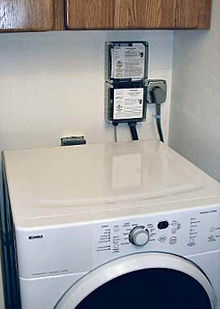| Part of a series on |
| Power engineering |
|---|
| Electric power conversion |
| Electric power infrastructure |
| Electric power systems components |


Demand response is a change in the power consumption of an electric utility customer to better match the demand for power with the supply.[1] Until the 21st century decrease in the cost of pumped storage and batteries, electric energy could not be easily stored, so utilities have traditionally matched demand and supply by throttling the production rate of their power plants, taking generating units on or off line, or importing power from other utilities. There are limits to what can be achieved on the supply side, because some generating units can take a long time to come up to full power, some units may be very expensive to operate, and demand can at times be greater than the capacity of all the available power plants put together. Demand response, a type of energy demand management, seeks to adjust in real-time the demand for power instead of adjusting the supply.
Utilities may signal demand requests to their customers in a variety of ways, including simple off-peak metering, in which power is cheaper at certain times of the day, and smart metering, in which explicit requests or changes in price can be communicated to customers.
The customer may adjust power demand by postponing some tasks that require large amounts of electric power, or may decide to pay a higher price for their electricity. Some customers may switch part of their consumption to alternate sources, such as on-site solar panels and batteries.
In many respects, demand response can be put simply as a technology-enabled economic rationing system for electric power supply. In demand response, voluntary rationing is accomplished by price incentives—offering lower net unit pricing in exchange for reduced power consumption in peak periods. The direct implication is that users of electric power capacity not reducing usage (load) during peak periods will pay "surge" unit prices, whether directly, or factored into general rates.
Involuntary rationing, if employed, would be accomplished via rolling blackouts during peak load periods. Practically speaking, summer heat waves and winter deep freezes might be characterized by planned power outages for consumers and businesses if voluntary rationing via incentives fails to reduce load adequately to match total power supply.
- ^ "People will be paid to use less electricity on Monday". BBC News. 2023-01-22. Retrieved 2023-01-23.